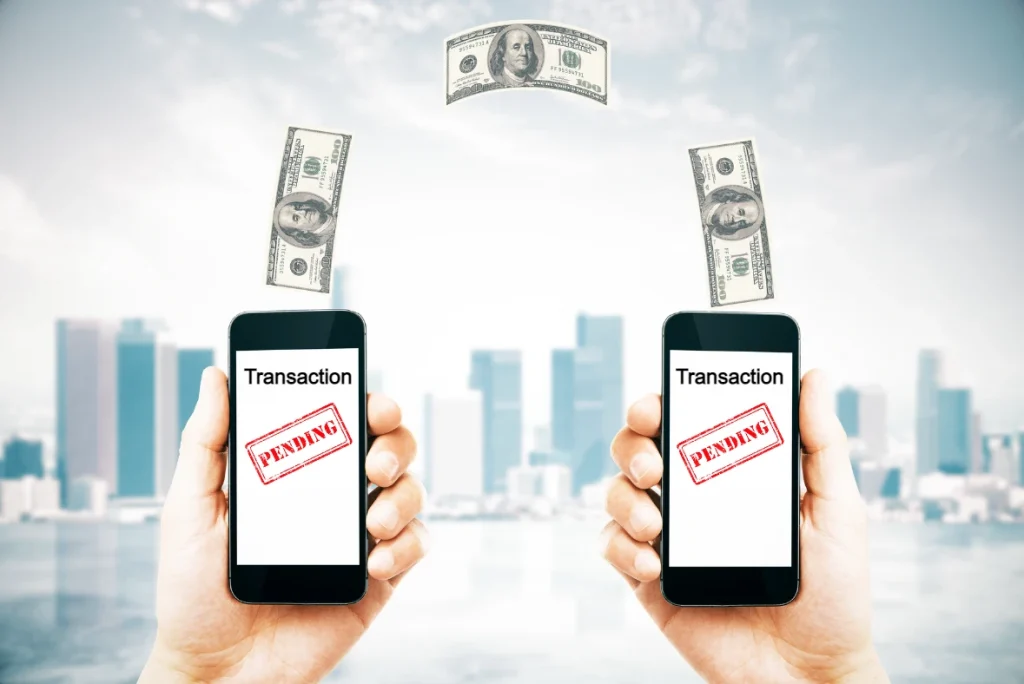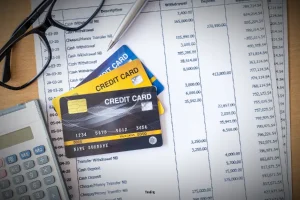Pending Transactions – All You Need to Know
If you have ever had a question about Pending Transactions, this is the article for you. Learn everything you need to know about this important banking term in our comprehensive guide.
- Towards the end of 2022, the Digital Payments segment will generate $8.49 trillion transactions.
- To ensure banks don’t hold onto your money for too long, the federal government passed the Expedited Funds Availability Act in 1987.
A pending transaction is an unconfirmed exchange of funds. For example, when you make a purchase online, the money goes into a pending state. It’s not transferred until the merchant approves and confirms the sale. If a merchant doesn’t take the funds out of your account within 7 days, they’ll usually return them to your account if the payment has not been processed. It can take 28 days for car rental and hotel reservations and 28 days for other hire transactions.
If you’re ever concerned about whether or not a purchase went through, check your pending transactions to see if it shows up there. In most cases, pending transactions will be cleared within a few days. However, in some cases, they may take longer to process. If you have any questions about why your transaction is still listed as pending after several days have passed, contact your bank or credit card company for more information. This article will provide all the information you need about pending transactions.
What does Pending Transaction mean?
Pending transactions are those that have not yet been completed. They can be either new or existing transactions, but they all require your team’s attention to move forward.
There are a few reasons why pending transactions might exist:
- The customer may have changed their mind and decided not to buy the product or service after all
- The supplier may have failed to meet the agreed-upon deadline for completing the transaction
- A technical issue may be preventing the trade from being completed
Pending transactions can cause frustration for both sides because they prevent businesses from moving forward with their plans. If you’re a business owner, it’s important to understand what causes pending transactions and how you can resolve them as quickly as possible.
How long does it take for Pending Transactions to clear?
When you send or receive money, a few things need to happen for the transaction to be completed. The first is that both parties must agree on the terms of the transfer and enter into a contract. Once this has been done, each party can transfer the necessary funds.
The second step is for your bank to process and confirm your payment. This usually takes around 2-3 days, but it can take up to 10 days if there are any issues with your account or if you’re using an international payment gateway. After your bank confirms the payment, it will move the money from your account into theirs and mark it as cleared. At this point, you’ll see a final balance reflecting how much was transferred and when it happened
Pending Bitcoin Transactions
Before being completed, all Bitcoin transactions require six blockchains confirmations from miners. The average time it takes to process a Bitcoin transaction is an hour and a half.
Pending transactions can be frustrating for two reasons: first, they may take longer to be confirmed than you’d like; and second, they may never be confirmed.
Can a pending transaction be refunded?
When a pending transaction completes, the transaction will be marked as “completed” in your account. Until then, it’s considered “pending.”
There are a few things to keep in mind when it comes to pending transactions:
You can’t refund a pending transaction. Pending transactions are subject to the terms and conditions of the product or service you buy or sell. This includes any cancellation fees, minimums, or other requirements associated with that product or service.
How to deal with a pending transaction?
Pending transactions can be frustrating, especially if you’re waiting for a payment to come through or the product to arrive. Here’s what you need to know about pending transactions and how to deal with them:
There is no one-size-fits-all solution when dealing with pending transactions, as the best approach depends on the situation. However, some tips include keeping track of your progress in a transaction log, contacting customers who haven’t responded, and working with your customer service team.
If all else fails and a transaction remains unresolved for more than 30 days, it may be time to consider filing a dispute resolution claim. This will help speed up the process and hopefully resolve the issue amicably.
Queued Transactions ProcessinG:
Queued transactions processing (QTP) is a technology that helps your business manage and process transactions more efficiently. QTP works by queuing up pending transactions and then sending them to the appropriate application or system as soon as they are completed.
This allows your business to handle more transactions at once and can use to get rid of pending transactions, which can lead to faster turnaround times and improved customer service. In addition, it can help prevent potential transaction errors from happening in the first place.
Canceling a pending transaction:
Canceling a pending transaction is one of the most important actions you can take to keep your business healthy. Canceling a pending transaction will prevent any additional charges from being processed,and i
Canceling a pending transaction is also an important part of your business. It can prevent potential losses and help keep your customers happy. Here are three ways to cancel a pending transaction:
- Use the “Cancel Transaction” button on the My Account page
- Send an email to the client with instructions on how to cancel their order
- Call or chat with the client and ask them to cancel their order.
Bottom Line
It’s no secret that pending transactions can be a pain for businesses of all sizes. These issues are unfortunately all too common, from lost sales to reputations. A pending transaction has a variety of reasons, but the most common ones are shipping delays or missing confirmation emails from your vendor. As such, it’s important to be aware of the risks and disadvantages associated with pending transactions to make an informed decision about whether or not you want to keep them.
I hope that you’ve found this blog post on Pending Transactions helpful. As you can see, it’s essential to be proactive regarding your business’ finances. Keep an eye out for future blog posts like this one, and please don’t hesitate to let us know how we can improve them. Thank you for reading!








